Is YouTube video part of your marketing plan? Want more people to find and watch your videos on YouTube?
To explore how to get your videos discovered on YouTube, I interview Tim Schmoyer. Tim is a YouTube expert whose channel has 500,000 subscribers. He hosts the Video Creators podcast and his course is called Video Labs.
Tim shares which factors help increase the likelihood that your video becomes discoverable on YouTube. You'll also find out how to improve YouTube audience retention.
Read a summary of the interview below. To listen to the interview, scroll to the end of this article.
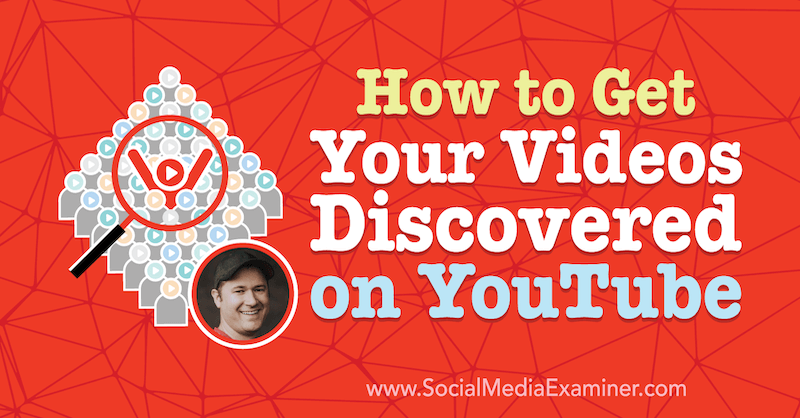
Why Marketers Should Take a Second Look at YouTube
One of the biggest reasons for marketers to consider YouTube is search visibility. YouTube, the world's second-largest search engine, is owned by Google, the world's largest search engine.
Today, when people are searching for results on Google, more YouTube video content is popping up in those results alongside blog posts and text-based articles, which is great. But, if you're not making content that will rank on the world's second-largest search engine, that's a pretty big missed opportunity.
There's a lot of potential to pick up traction there.
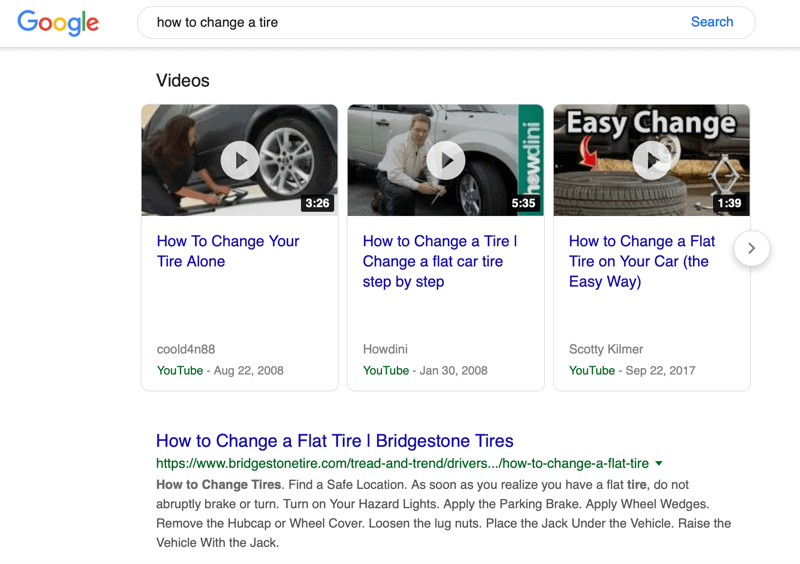
Tim says he's heard several people who are making full-time income from their website say that when they added YouTube to their content marketing, it brought in more revenue than any other part of their business.
Why? YouTube allows them to show viewers how their products work and build a human connection with them.
While Tim is quick to note that not everyone will see the same results, he says several of his clients have actually sold their blog and kept their YouTube channel because it converts better.
About YouTube's Audience
Common pushback Tim hears when he talks about YouTube is that the platform is so saturated and people wonder if it's too hard to get in or if it's still worth the effort.
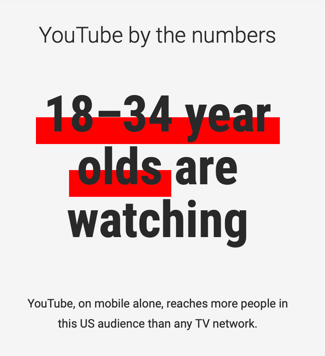 To address the pushback, Tim shares that nearly two billion active viewers log into YouTube every month, which is up 5% from just 9 months ago. These people aren't passively going to the platform; they're actively subscribing to and following channels, watching and commenting on content, and engaging.
To address the pushback, Tim shares that nearly two billion active viewers log into YouTube every month, which is up 5% from just 9 months ago. These people aren't passively going to the platform; they're actively subscribing to and following channels, watching and commenting on content, and engaging.
What's more, YouTube reaches more U.S. consumers 18–49 years old in an average week than all cable TV networks combined. And they're spending more than 250 million hours per day watching YouTube, which is close to 39% higher than this time last year.
Get World-Class Marketing Training — All Year Long!
Are you facing doubt, uncertainty, or overwhelm? The Social Media Marketing Society can help.
Each month, you’ll receive training from trusted marketing experts, covering everything from AI to organic social marketing. When you join, you’ll also get immediate access to:
- A library of 100+ marketing trainings
- A community of like-minded marketers
- Monthly online community meetups
- Relevant news and trends updates
The audience age on YouTube is very broad, Tim says. He worked with a lifestyle channel that was actively targeting women age 60 and older. The channel had 400 subscribers when they started, and within a year, it had surpassed 100,000 subscribers and was logging millions of views a month.
How Does YouTube Differ From Google?
A lot of people assume that because Google owns YouTube, both probably follow a lot of the same rules and principles. That's true in some regards, but they're very different platforms. What works on Google in terms of keywords and tags won't necessarily grow your channel on YouTube.
On the homepage of Google, there may be a few account links at the top, but for the most part, it's a blank page with a search box in the middle. Google wants to deliver results that either answer your question right there on their page or move you to a website that can give you a more in-depth answer.
The homepage of YouTube has a ton of things going on. The search bar is kind of hidden and it's not the only option. There's a big ad right at the top of the page, and several videos YouTube thinks you'd be interested in. The goal of the page is to get you to browse video and start a viewing session. YouTube is also selling their own products: YouTube TV and YouTube Premium.
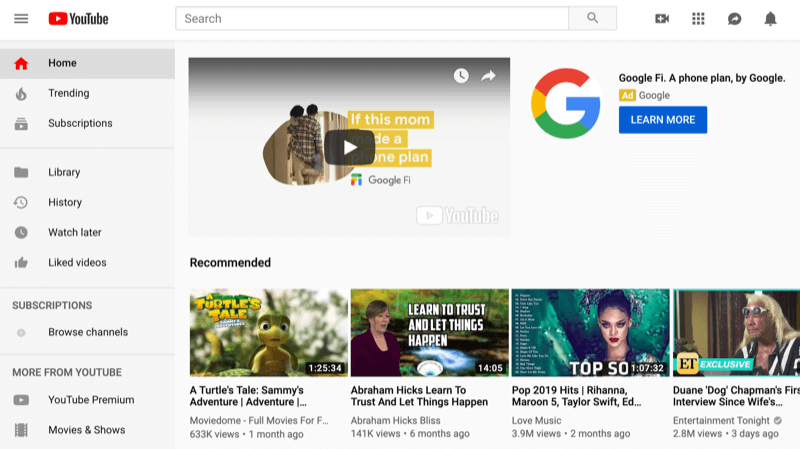
The way people discover content on each platform also varies. To illustrate, based on your past engagement and views, YouTube will serve suggested videos they think you might like right on the homepage, whether you've entered a search or not. It's very similar to recommendations on Netflix.
YouTube is always trying to bring people back to the platform, hold their attention, and keep them there. So as marketers who want to do well on YouTube, it's really important to craft content that supports those goals.
How Does YouTube Differ From Facebook?
People aren't typically going to Facebook to search for how-to DIY content such as “How do I fix my lawnmower's battery?” Instead people are scrolling (browsing) through the news feed. When they see a video that catches their eye, they'll stop and watch.
People on YouTube are specifically looking for content to watch. Once they're on the platform, then they start browsing.
How Is Video Discovered on YouTube?
There are a number of ways people discover video on YouTube, including:
- Searching for content
- Browsing content and going from one suggested video to the next
- Watching playlists, thereby discovering related videos in those playlists
- Finding new channels through video collaborations
- Watching the suggested video on their YouTube homepage

If you want YouTube to suggest your video, you need to help them accomplish their goals of getting people back to YouTube, getting people to watch, and holding viewers' attention longer.
Ultimately, YouTube wants people to engage with as many videos as possible, subscribe to as many new channels as possible, and see as many ads as possible; which is really what they're all about.
Create Video That Brings People Back to YouTube
Often, the videos YouTube puts on a viewer's homepage have broad appeal but it's also influenced by what the viewer is watching. For instance, if you spend half an hour watching new videos from Social Media Examiner, Google postulates that you're on a big Social Media Examiner kick and will put more of the channel's videos on your homepage every time you come back to the platform.
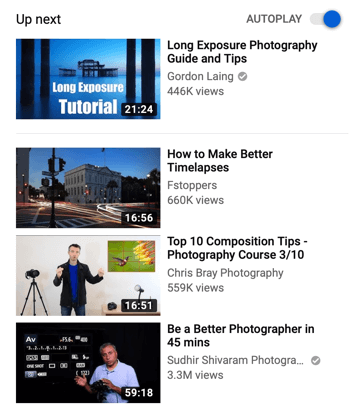 Suggested videos can also be influenced by the days you watch certain videos.
Suggested videos can also be influenced by the days you watch certain videos.
To visualize this, a viewer who knows Social Media Examiner publishes a new video every Tuesday and Friday comes back to YouTube to watch those videos on those days. YouTube learns from this behavior and will save them the trouble of navigating to the channel by putting Social Media Examiner's new videos right in front of that person on Tuesdays and Fridays.
As a marketer or channel owner, you can use this to your advantage by having a posting schedule. The consistent production of video on a certain day can be an incentive to bring people back to YouTube. If YouTube can conclude that's the reason they're coming back, your videos stand a better chance of showing up as suggested content.
Making your content part of someone's weekly routine to the point where YouTube will promote your video to the homepage means that people start their viewing session with you right in front of them and yours is the first video they watch. That's really valuable.
To track the traffic from people browsing YouTube's homepage, open YouTube Analytics and click on Traffic Sources.
Create Video That Encourages People to Watch to the End
Watch time—the length of time someone spends watching your videos both individually and collectively—is one of the primary metrics Google uses to determine the value of a video.
When YouTube surfaces a video, they want to know if people watch it, if they click through, and if they're engaged. If someone does click through, do they watch for 2 seconds and leave, 10 seconds and leave, or do they stay for a full 10 minutes?
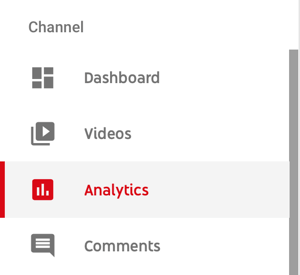 This is where audience retention comes into play.
This is where audience retention comes into play.
Tim says the top creators he knows (channels with 60–100 million views a month) are intimately familiar with their YouTube audience retention graphs. Those creators use those graphs to craft each video in a way that holds their audience's attention to the end.
For example, one client discovered that a portion of his viewers dropped every time he said the word “module.” He stopped using “module” in his video and the retention graph flattened out. People watched for a longer period of time, which raised the value of his videos in the platform's eyes.
Tim's friend Grant Thompson from the King of Random studied his graphs so closely that he was able to produce an 80-page editing checklist. He can hand his raw footage and the checklist to anyone who knows the mechanics of editing video and get back a video that's 100% every single time.
Another friend, Jeremy from J. House blogs, knows exactly how many seconds he can talk and how many seconds his wife can talk before people leave the content. He knows how many seconds he can go before showing another clip of his kids, what type of music is going to impact audience retention, even how long he can use a specific genre of music.
The benchmark percentage of an audience watching to the end of the video varies by audience. The average viewing session for 2-year-olds watching a kids' channel is going to be very different from average viewing session for 30-year-old guys who want to learn how to fix a car.
That said, Tim generally wants to see 50% of the audience who clicked Play to watch to the end of the video.

To view your retention graphs, open YouTube Analytics and click on Audience Retention.
Encourage Longer Watch Time on YouTube
Once you've gotten someone to watch your video, how do you improve watch time? Stop telling people they can leave and encourage them to stick around.
So often, Tim sees creators and marketers end a video by copying what they've seen on television—with a sign-off, a farewell, or a goodbye similar to, “Hope this was helpful, let me know what you think, see you guys in the next one.” He says a lot of creators give those signals even before the end screens come on.

Discover Proven Marketing Strategies and Tips
Want to go even deeper with your marketing? Check out the Social Media Marketing Podcast! Publishing weekly since 2012, the Social Media Marketing Podcast helps you navigate the constantly changing marketing jungle, with expert interviews from marketing pros.
But don’t let the name fool you. This show is about a lot more than just social media marketing. With over 600 episodes and millions of downloads each year, this show has been a trusted source for marketers for well over a decade.
That's a very strong signal to the viewer that your video is over, there's no additional value coming, and they may safely abandon it.
Instead of signing off, deliver good content to the very end of your video and use end screens. As the end screens show, say something similar to, “Now that you guys know X, I want to share Y and take it to a whole new level. Click the video on your screen right here, and I'll see you guys over there.”
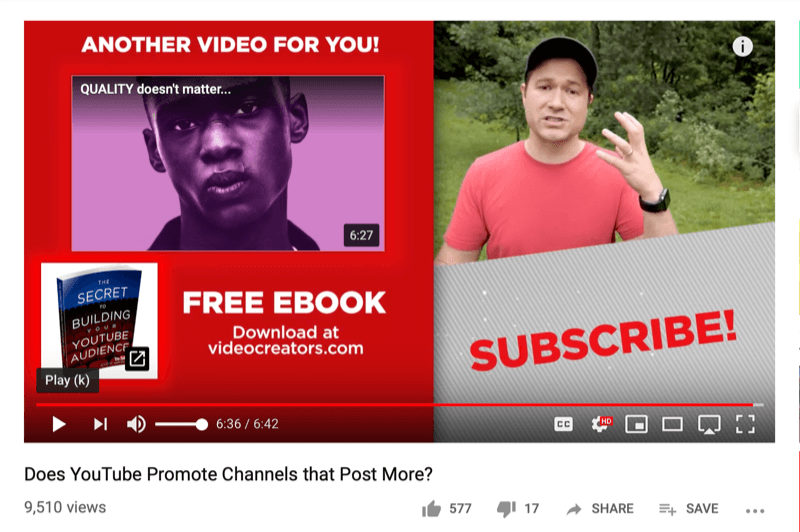
You're encouraging someone who just gave you the maximum amount of watch time on video A to click and watch another video, and another, and so on.
An average click-through rate (CTR) on a new video is around .7%–1%. Using the tactic above, Tim has seen CTR rise to 42%.
As you grow a library of content that supports this approach, your whole channel gets a lift. To illustrate, one of Tim's clients went from 2,000 subscribers a day to over 39,000 subscribers per day; they just blew past 2 million subscribers and approximately 90%–93% of that traffic comes from the YouTube homepage.
Another way to keep people watching YouTube longer is by getting them into a short playlist of content where they watch not only one video, but a second, third, and fourth video.
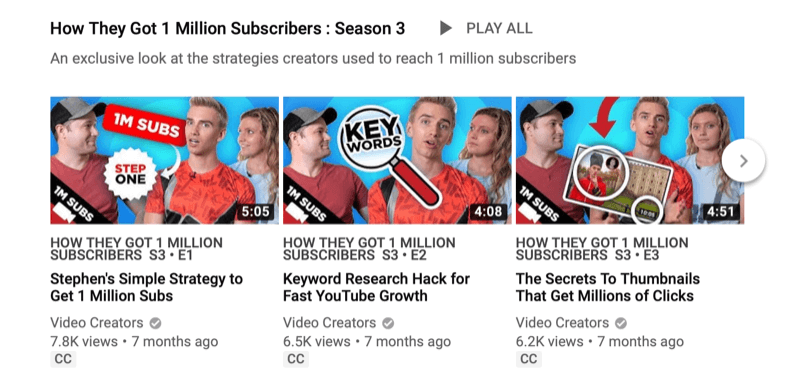
Other Factors That Affect Discoverability
The two main things marketers can control on YouTube are the quality of the content we publish and its metadata; the title, description, tags, and so forth. But you can't simply slap on the metadata and trust that your video is going to rank better in search.
Video optimization did work that way many years ago, but Google realized the best result for a search query isn't necessarily the video that repeats a keyword five times in the description and crams it 14 different ways into the tags.
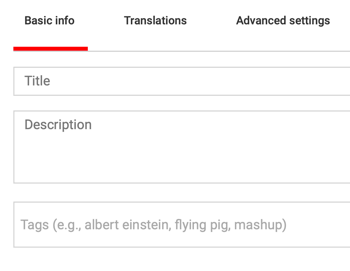 Metadata is still important, but today, the game is about rewarding viewers with relevant content and keeping them engaged, as opposed to merely attracting clicks from viewers who don't stay to watch. If people abandon your content pretty quickly, your video won't rank well.
Metadata is still important, but today, the game is about rewarding viewers with relevant content and keeping them engaged, as opposed to merely attracting clicks from viewers who don't stay to watch. If people abandon your content pretty quickly, your video won't rank well.
So the bigger goal should be to optimize videos for people, not for algorithmic robots. Viewer signals are more important then metadata.
To explain, Tim shares a real-world example from one of his searches. His daughter wanted to learn how to draw a cat so he opened up YouTube and typed in, “How to draw a cat.” The first result that showed up was a video titled, “How to draw a cute husky puppy.”
While there were no cat-related keywords on the video, the thumbnail image of a husky puppy did vaguely resemble a cat. As people who clicked on the video stayed to watch until the end, Google and YouTube specifically learned that it was a relevant result.
The video wasn't served because it used the right keywords, it was served because it delivered the right value.
A Note About Titles and Thumbnails
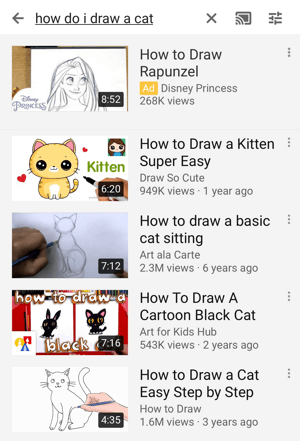 On YouTube, the customer journey doesn't start with the video itself, it actually starts with the title and the thumbnail. They set an expectation, and viewers click in anticipation of the expectation being fulfilled.
On YouTube, the customer journey doesn't start with the video itself, it actually starts with the title and the thumbnail. They set an expectation, and viewers click in anticipation of the expectation being fulfilled.
It's very important that your video immediately delivers on the value promised by the title and thumbnail. This is especially necessary for non-subscribed people who have never heard of you before.
You can't open your video with something along the lines of, “Hey, welcome to my show, my name is Tim, and here I am hanging out with Michael Stelzner on the Social Media Examiner podcast. And I am really glad that you tuned in.”
Using that intro, you're likely to see a steep drop in your audience retention graphs. In 10 seconds, half of your audience could be gone.
Why Keeping Viewers on YouTube Works for Marketers
When the goal of marketing is to get people to a place where they can buy your product, keeping viewers on YouTube can feel like the opposite of that goal.
To address this, Tim shares another client story.
The guy was doing one video every weekday, totaling five videos per week. The goal of every video was to generate sales. The call to action of every video was basically, “Hey, go buy this thing from my website.” He was doing okay and generating about $20,000 a month for his business.
 He shifted to making four videos per week to encourage people to watch more content, and one video a week that encouraged people to visit his website and buy from him.
He shifted to making four videos per week to encourage people to watch more content, and one video a week that encouraged people to visit his website and buy from him.
It's important to note that the sales video wasn't like a commercial. He was still teaching his viewers something, but at the end, he would say, “And to take this to the next level, buy X.”
The whole channel saw tremendous lift and his channel growth almost doubled over the course of a few weeks. What's more, he went from doing $20K a month to $100K a month.
The key realization was that he had been trying to accomplish too many goals with each piece of content. He wanted every video to get a lot of views, get a lot of subscribers, generate a lot of sales, and rank number-one in service—and then do well on Reddit, too.
Nowhere in marketing does one piece of content support 15 goals. Make each piece of video content revolve around a very specific goal—community, discoverability, or sales, for example.
If the goal of your video is to be discoverable, make high-value content people can click and watch even if they've never heard of you before. Once they've been introduced to your brand, you can encourage them to watch more content where you continue to deliver value.
I share that we employ a similar model on the Social Media Examiner blog. At the end of our blog posts, we don't ever tell people to go buy anything. Instead, we encourage them to get something for free by subscribing to our newsletter in which we'll deliver our daily articles so they never miss out. Each month, we add close to 15,000 email subscribers to our email list.
How Long Should YouTube Video Be?
Is there a sweet spot for video length? Tim says the short answer to this question is no. There's not enough data to provide helpful guidelines.
Rather than asking how long your video should be, you should consider how well you can hold someone's attention. If it's 10 minutes, do 10-minute videos. If you can hold attention for 2 minutes, do 2-minute videos.
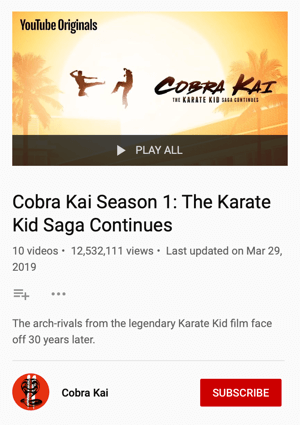 It's about how well you tell a story.
It's about how well you tell a story.
On YouTube Red, for instance, each Cobra Kai episode is about 45 minutes long. Tim says he watched 13 episodes in two viewing sessions but notes that he watched the videos on a television. People watching YouTube on televisions might have longer viewing sessions because it's a more passive viewing experience than leaning in at your desktop or watching on your phone.
Even as far back as 2012, when people said video shouldn't be any longer than 2 minutes, a 30-minute documentary titled “Kony 2012” told a great story and broke all records in terms of how quickly it grew to 1 million views and beyond.
I share that after two seasons of producing Social Media Examiner's docu-entertainment show, The Journey, we found the sweet spot to be 5–7 minutes and see anywhere from 40%–55% audience retention.
Discovery of the Week
URLList is a free bookmarklet that allows you to bring a whole bunch of URLs together in one place and then share them out with a single link.
One use case that isn't explicitly stated on their site is to create a large list of URLs for all of your different product landing pages and then use that one URL in your Instagram bio.
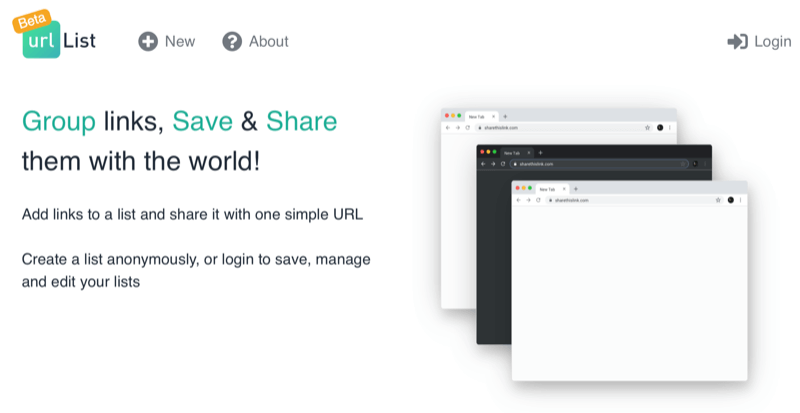
Another use case would be to curate the URLs of your favorite podcasts, and then include the single URL in a post on social, “Here are the 10 podcasts that I'll never unsubscribe from.”
As you drop each link into the bookmarklet, you can edit its description and even add some metadata.
URLList is free and very easy to use. You can create a list anonymously or log in to save, manage, and edit your lists.
Listen to the show to hear more about URLList.
Key Takeaways From This Episode:
- Listen to Tim Schmoyer's Video Creators podcast.
- Watch Tim's YouTube channel, Video Creators.
- Check out Tim's Video Labs course.
- Explore URLList.
- Learn more about the Video Marketing Summit at VideoMarketingSummit.live.
- Watch our weekly Social Media Marketing Talk Show on Fridays at 10 AM Pacific on Crowdcast.
Listen to the Interview Now
The Social Media Marketing podcast is designed to help busy marketers, business owners, and creators discover what works with social media marketing.
Where to subscribe: Apple Podcasts | Spotify | YouTube Music | YouTube | Amazon Music | RSS
Help Us Spread the Word! Please let your Twitter followers know about this podcast. Simply click here now to post a tweet.
If you enjoyed this episode of the Social Media Marketing podcast, please head over to iTunes, leave a rating, write a review, and subscribe. And if you listen on Stitcher, please click here to rate and review this show.
What do you think? What are your thoughts on getting your videos discovered on YouTube? Please share your comments below.
Attention Agency Owners, Brand Marketers, and Consultants

Introducing the Marketing Agency Show–our newest podcast designed to explore the struggles of agency marketers.
Join show host and agency owner, Brooke Sellas, as she interviews agency marketers and digs deep into their biggest challenges. Explore topics like navigating rough economic times, leveraging AI, service diversification, client acquisition, and much more.
Just pull up your favorite podcast app, search for Marketing Agency Show and start listening. Or click the button below for more information.

